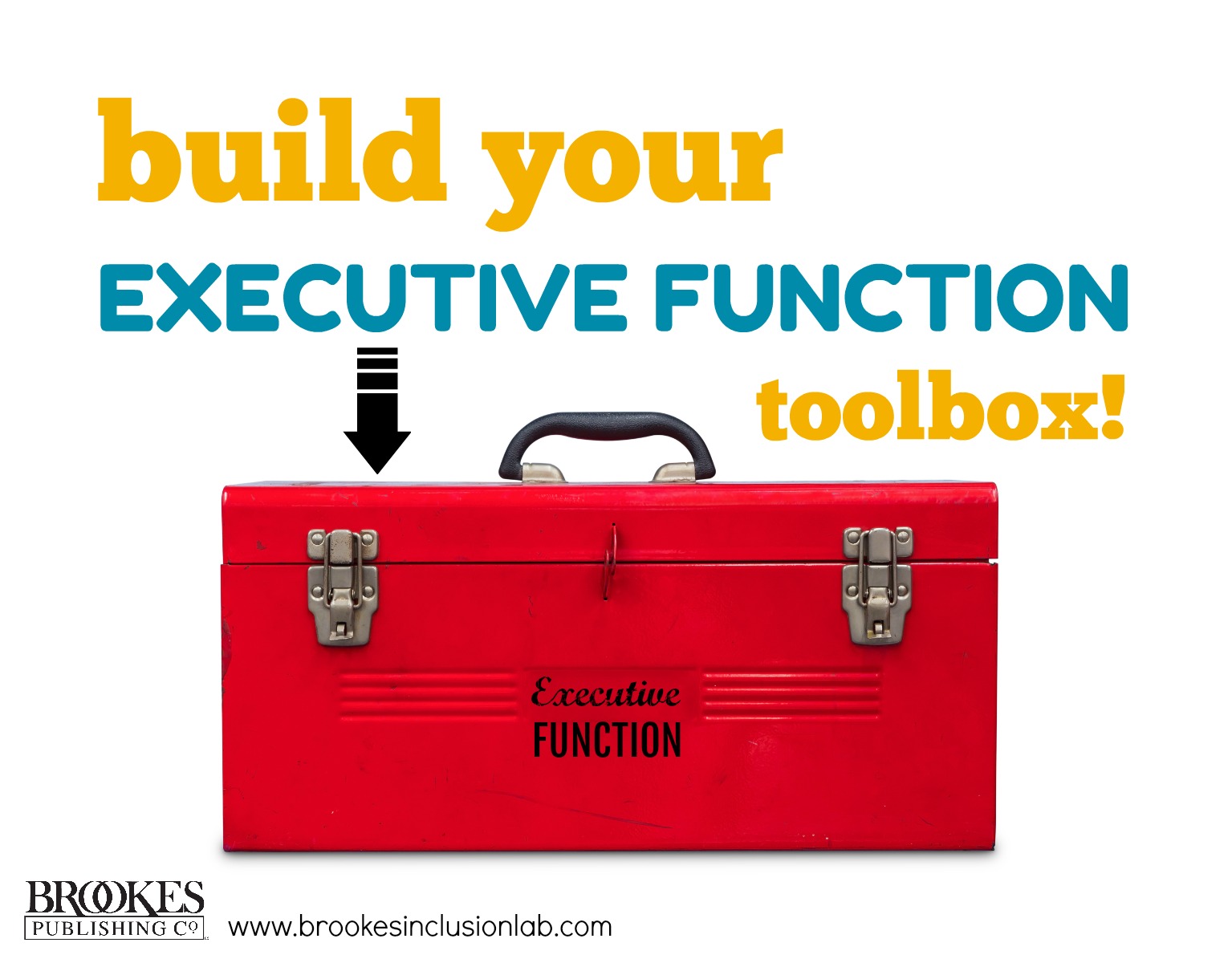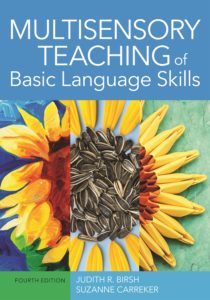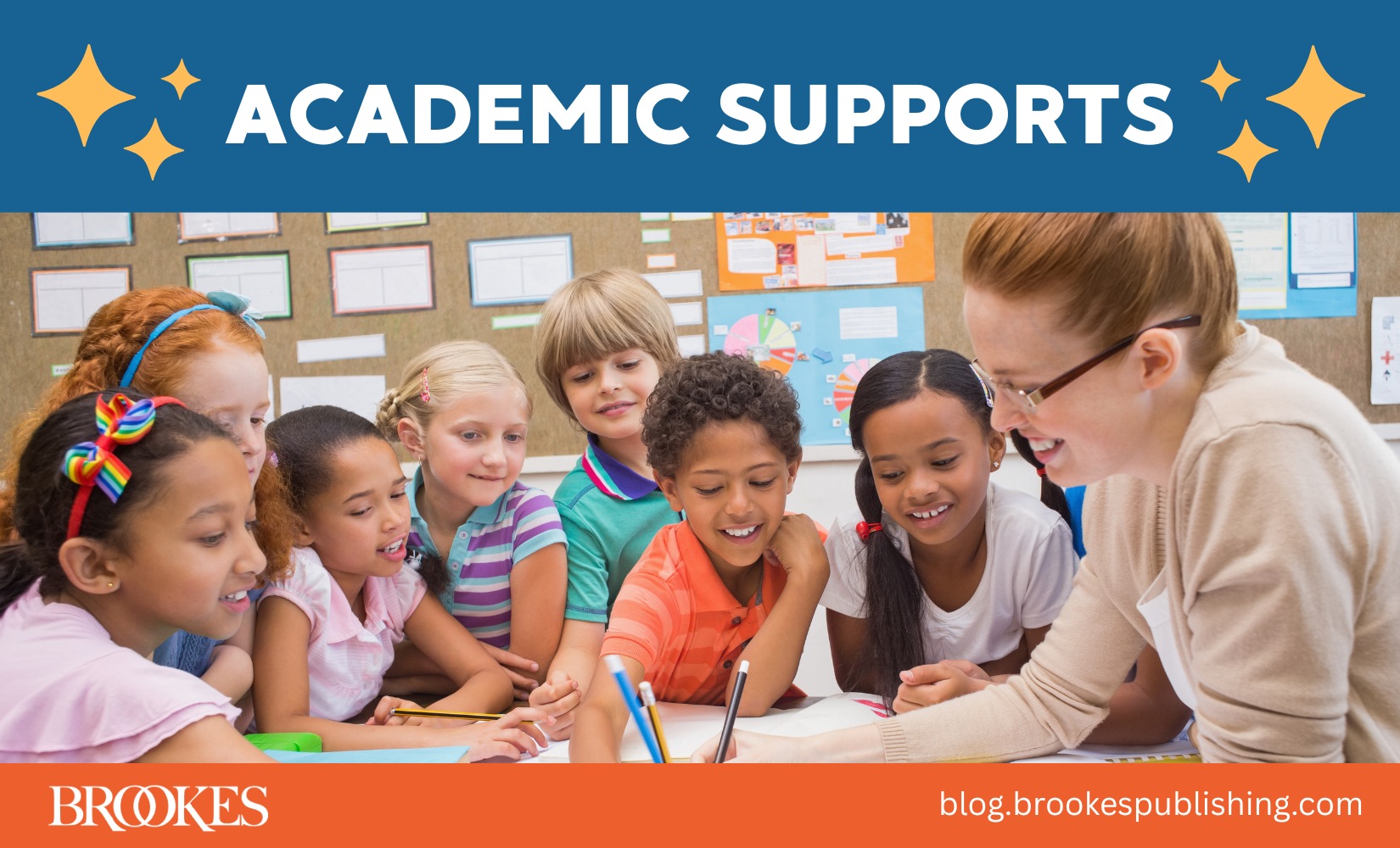5 Tips on Building an Executive Function Toolbox for Your Learners
July 31, 2018
We’ve had a lot of interest in our blog posts on executive function (like this one and this one), so this week we’re bringing you some helpful tools to put in your “executive function toolbox” as you prep for the new school year.
Today’s post—excerpted and adapted from Multisensory Teaching of Basic Language Skills, Fourth Edition, edited by Judith R. Birsh & Suzanne Carreker—will help you support the executive function skills of learners of any age and across learning environments. The following five “tools” are great ways to promote your students’ cognitive flexibility, social-emotional skills, self-regulation, and working memory.
Tool 1: Make use of varied learning modalities
Instruction that makes use of all different types of learning modalities will help build your students’ cognitive flexibility. For example, incorporate the following into your instruction:
- Visual learning. Use learning devices such as photos, videos, posters, artwork, and PowerPoint presentations. Invite learners to draw or diagram to understand concepts, use spatial maps and concept mapping systems, and visualize concepts in their “mind’s eye.”
- Auditory learning. Supplement lessons with audio sources such as speeches, music, sound effects, and words and phrases in other languages. Boost students’ memorization skills using rhythm, rhyme, and rap. Try recorded books and read-alouds for students who may learn better through spoken language than written language.
- Kinesthetic learning. Try weaving sensory, tactile learning strategies into lessons. Introduce activities that use the hands and body—manual tasks, motor tasks, dance. Encourage your learners to build, create, disassemble, and rebuild physical items that support learning, such as three-dimensional models.
Tool 2: Emphasize “portable” academic skills
Another way to build cognitive flexibility is to focus on teaching portable skills that are generalizable and transferrable to other academic contexts. For example, when they read texts, students should learn the following skills that are applicable across academic subjects:
- recognizing and analyzing text structures
- understanding and using various text features (such as headers and tables)
- reviewing and summarizing text
- skimming and scanning texts for the most important points
- looking back in texts to find information or confirm what they learned
- self-monitoring for any breakdowns in comprehension
- asking clarifying questions (“If I understand correctly, you said _____”)
- untangling the language of different types of academic questions, such as summarizing questions, inferential questions, and main idea questions
- mastering academic “task words” such as alphabetize, unscramble, categorize, measure, outline, review, revise, total, compare, estimate, and analyze
- understanding word morphology and derivations
- inferring information to predict what’s going to happen in a story
Once students master these portable skills, they’ll have the foundation they need to understand and interact with texts effectively across academic areas.
Tool 3: Give students the language they need to self-regulate
Effective self-regulation starts with learning the right vocabulary. Explicitly teach your students the vocabulary of self-regulation, reviewing the meaning of relevant words like initiate, inhibit, impulse, and emotion. Also, teach students how to describe their own impulse control, adaptability, habits, responsibilities, frustrations, and distractions. Having the language to describe their experiences and emotions is the first step toward learning to self-regulate their actions.
Tool 4: Teach students how to build social-emotional skills
To help your students strengthen the social skills they need to succeed, focus on teaching social problem solving using self-questioning. Here are some questions your students might ask themselves as they work to solve social problems:
- Why do other people act for themselves (and not just do what I want)?
- How do my actions affect others?
- What is the right thing to say now?
- What is helpful when interacting with others? What is hurtful to others?
After students confront a challenging social problem, teach them how to plan adjustments to their responses and emotions in the future: “I will do that again, and here’s why.” “I will not do that again, and here’s why.” “I will change how I do that, and here’s why.”
Tool 5: Facilitate working memory functions
Your executive function toolbox should also include strategies that build working memory by facilitating storage, retrieval, recall, and remembering. Here are some general tips:
- Begin a lesson by stating its purpose and objectives and previewing lesson content.
- Use plenty of visuals and external memory aids, such as notes, word walls, and glossaries.
- Illuminate the big picture; present content as files of interrelated information.
- Present a manageable number of details to prevent overload.
- Reduce environmental distractions that impede learning.
- Talk to students about the anxiety memorization may cause, and discuss ways to reduce stress.
- Make content meaningful, connecting it to students’ everyday lives to promote true comprehension.
- Teach concepts through vivid experiences such as experiments and dramatizations—experiential memories tend to be strong and lasting.
- Periodically review the use of any memory aids—students with executive function challenges may sometimes forget how to use the memory aid.
Which tools are in your executive function toolbox? Is there a strategy you use that isn’t on this list? Share your best tip in the comments below!
LOOK INSIDE THE BOOK
Multisensory Teaching of Basic Language Skills, Fourth Edition, edited by Judith R. Birsh & Suzanne Carreker
In the new edition of this bestseller, you’ll get rich background information on the systems and structures of the English language, plus a deep dive into the what and how of Structured Literacy Instruction. You’ll also find practical strategies and guidelines on all aspects of language and literacy instruction, including planning effective lessons, connecting research with practice, conducting and interpreting assessment, understanding the emotional side of learning disabilities, and more.





Write a Comment
Your email address will not be published. Required fields are marked *
Post a Comment